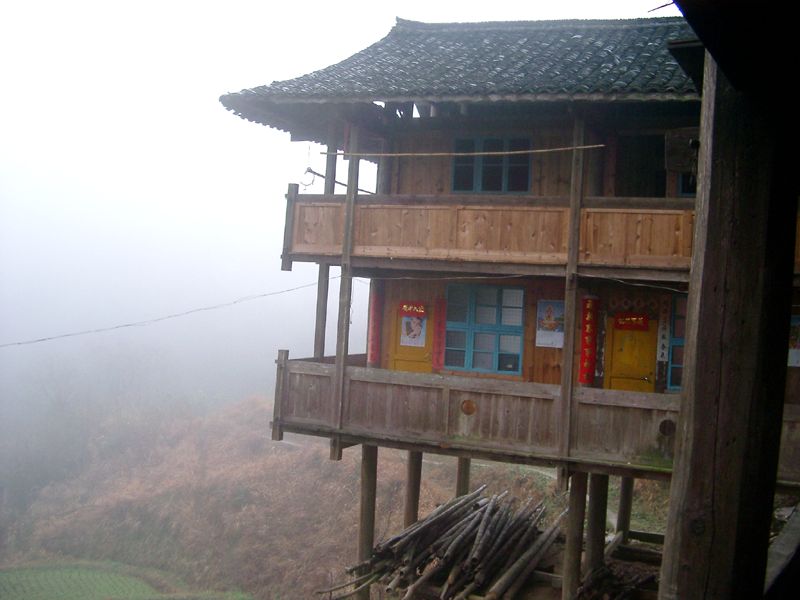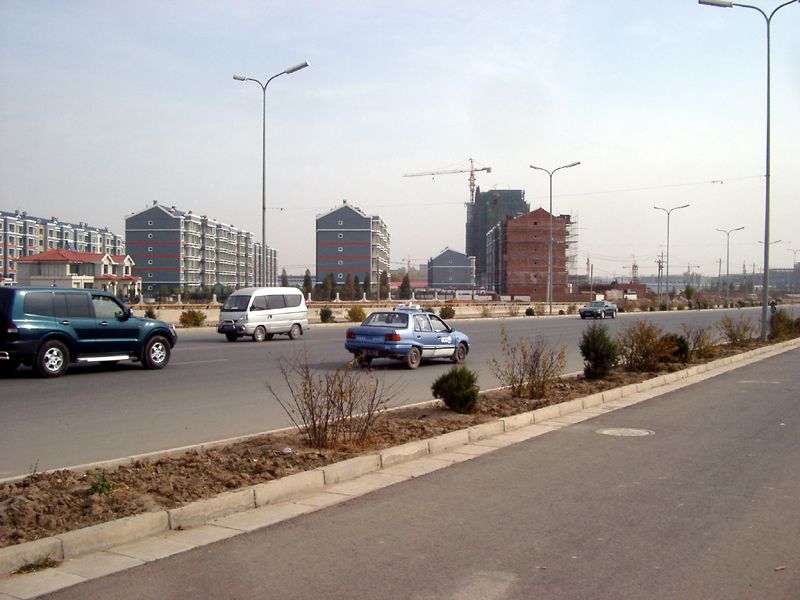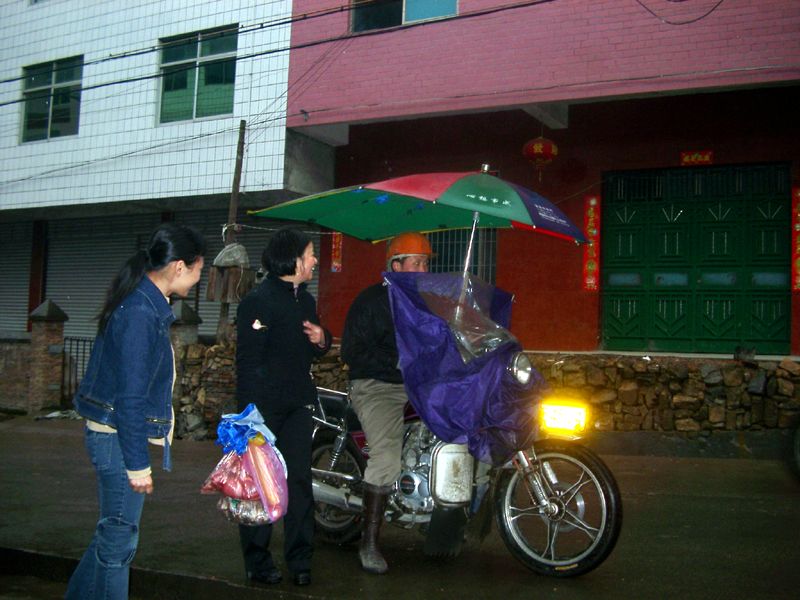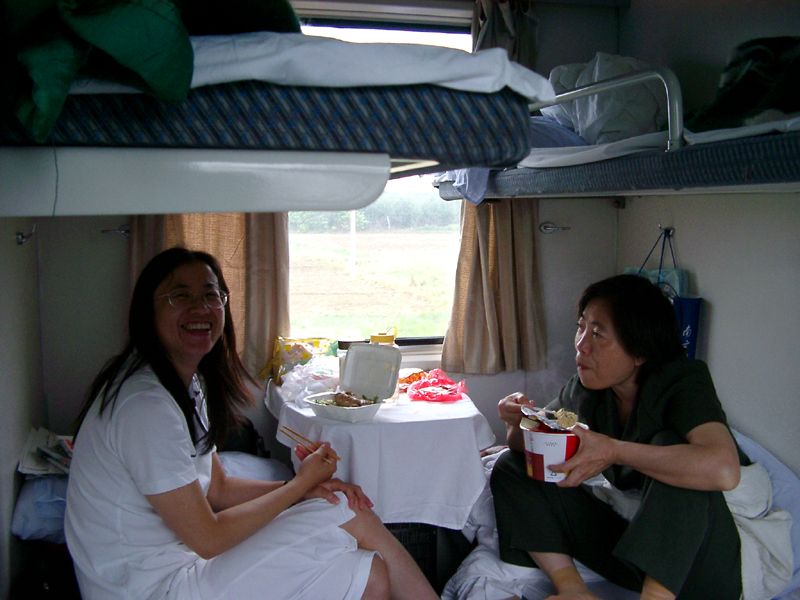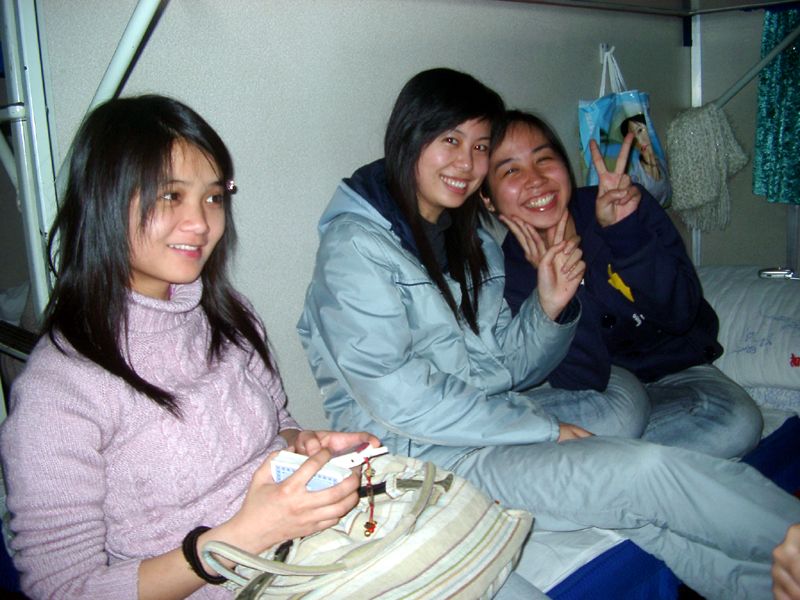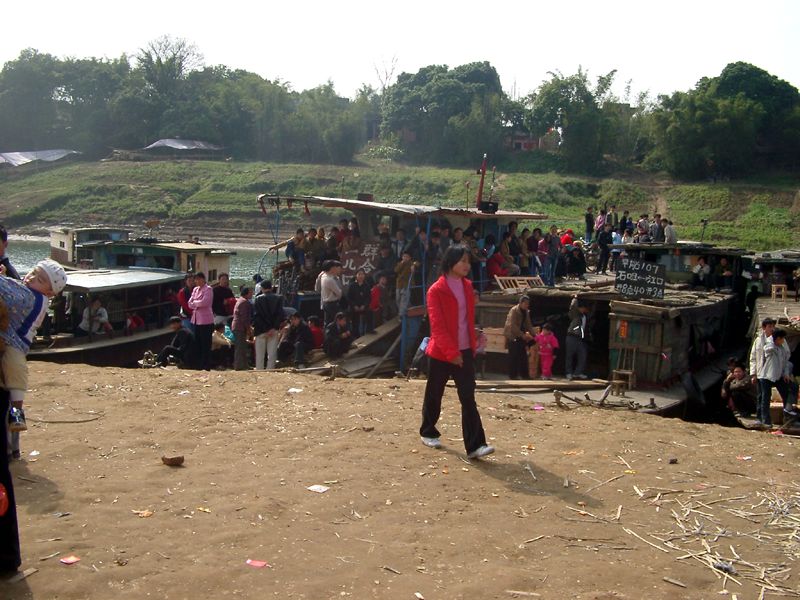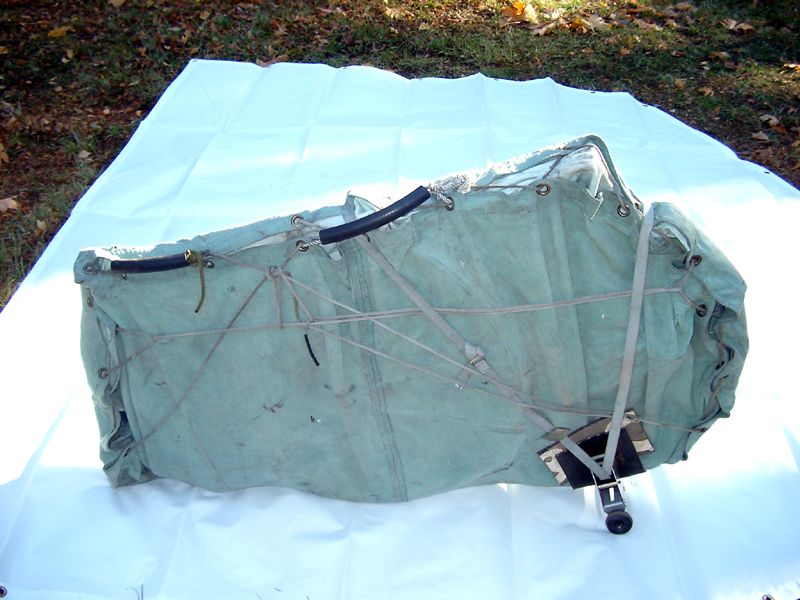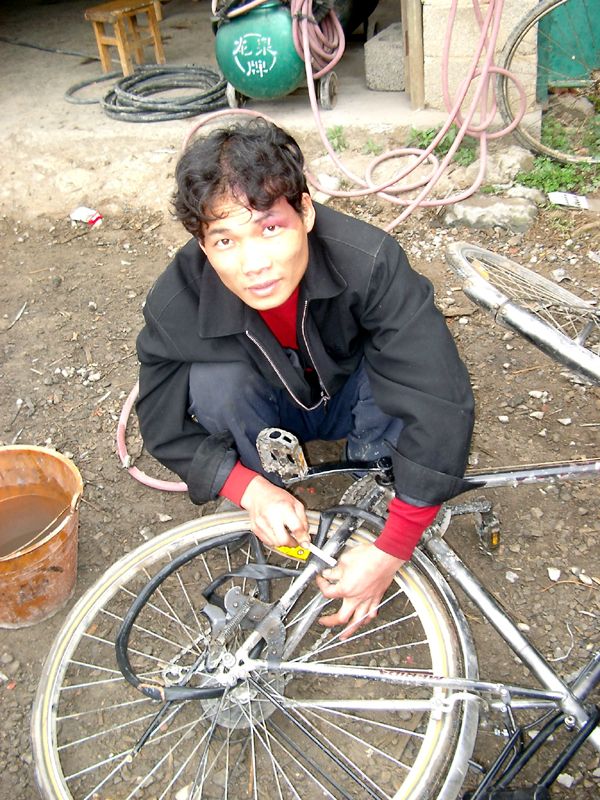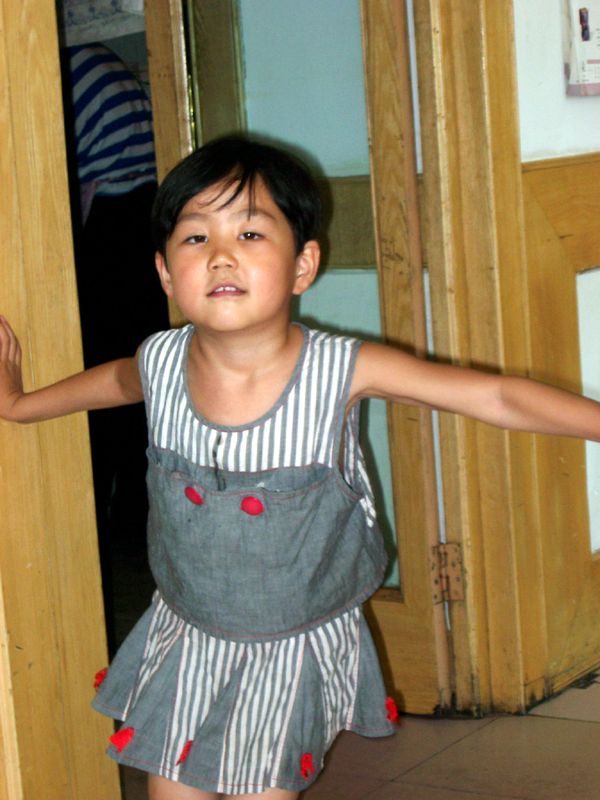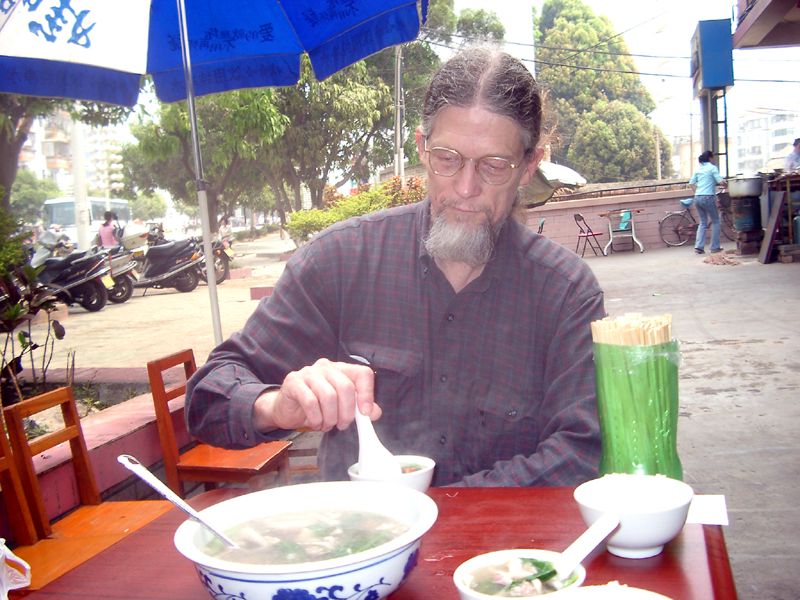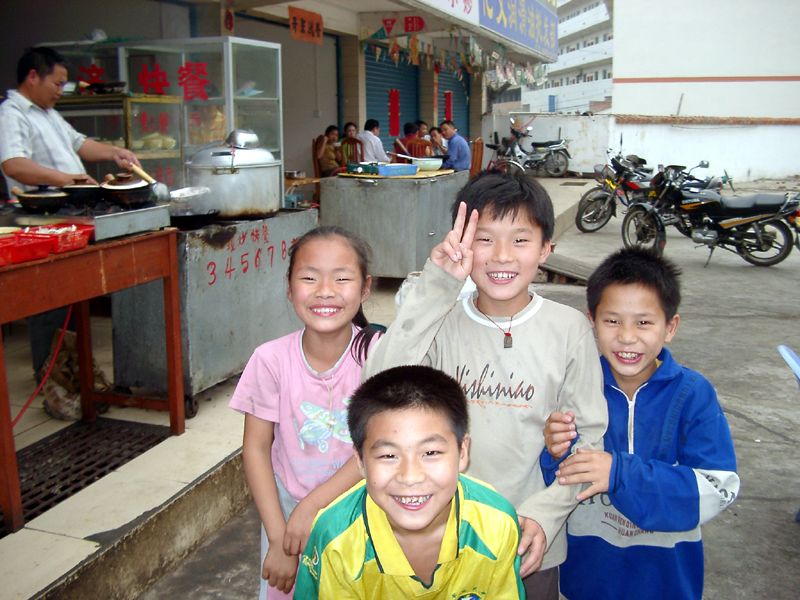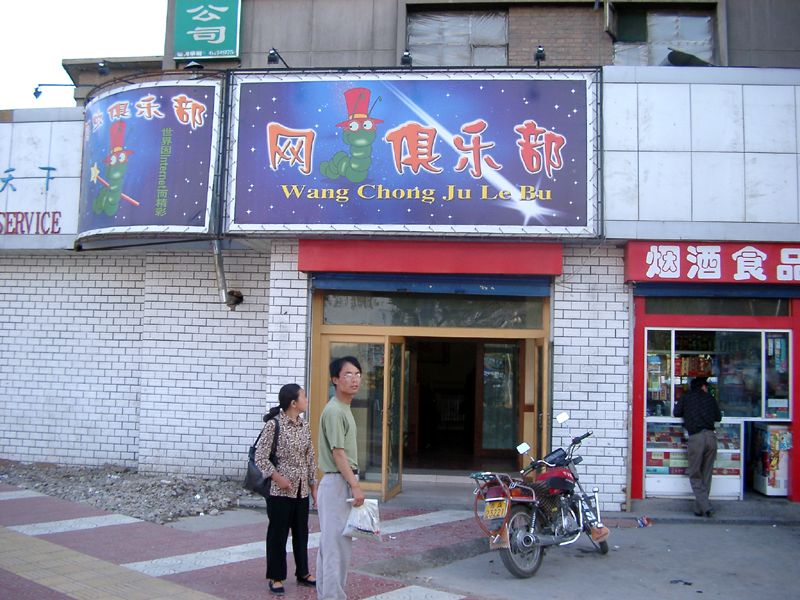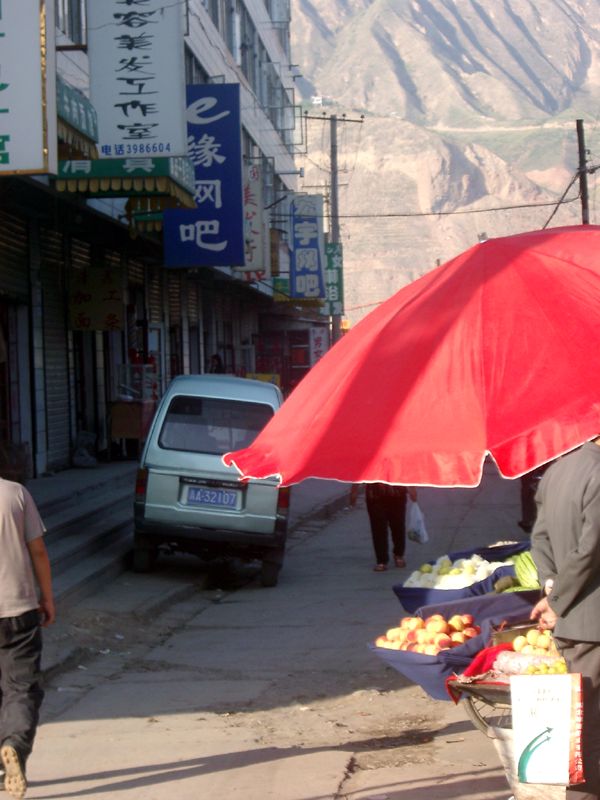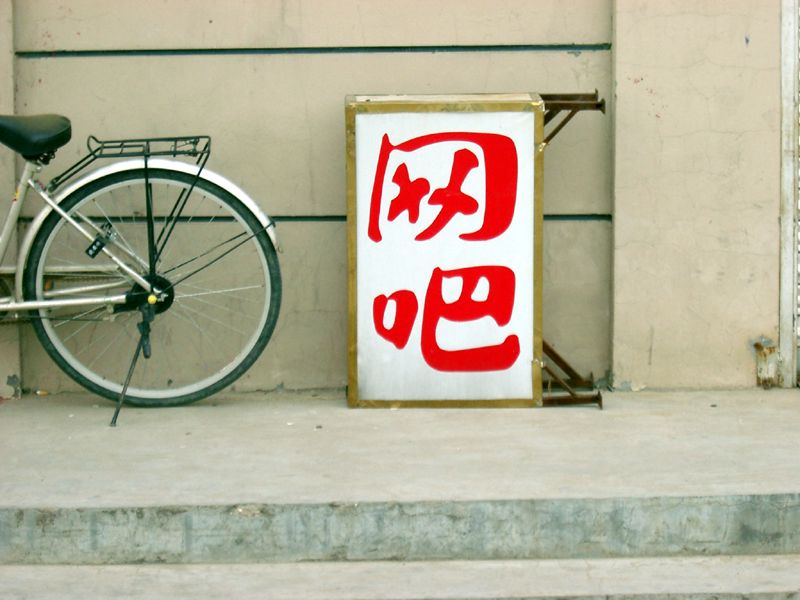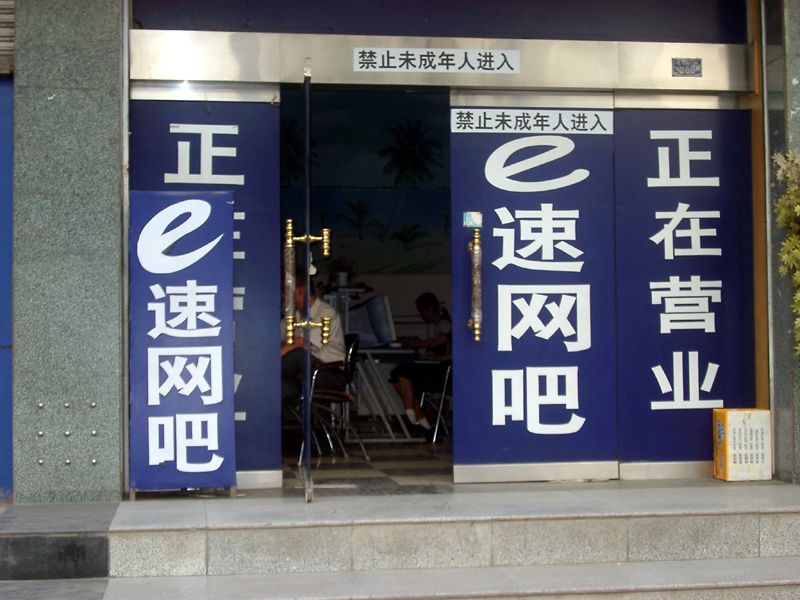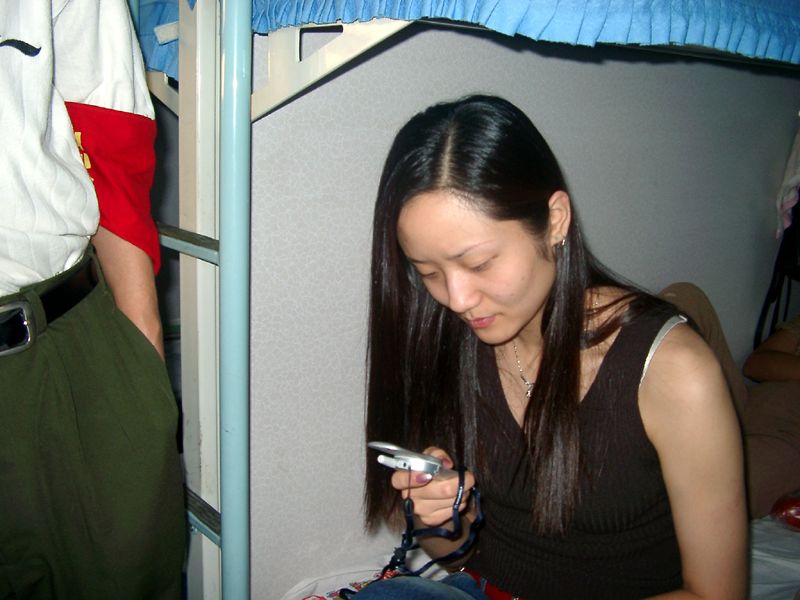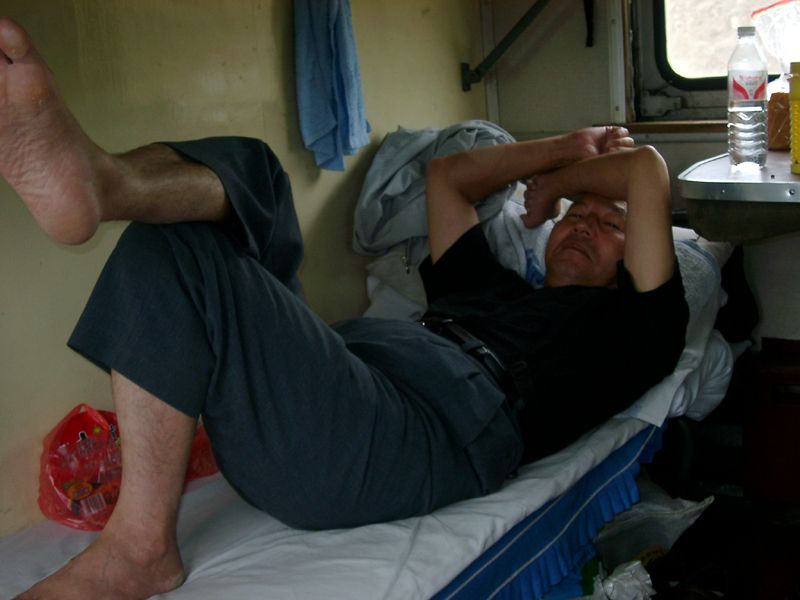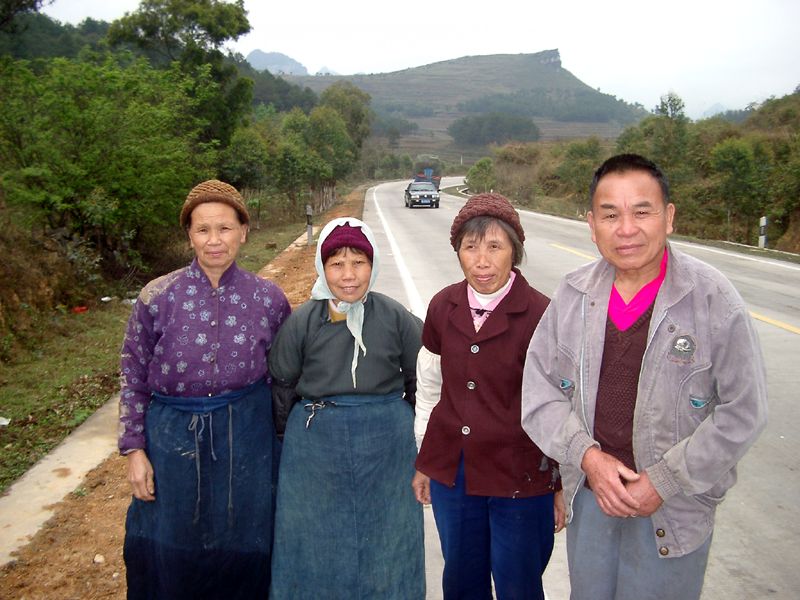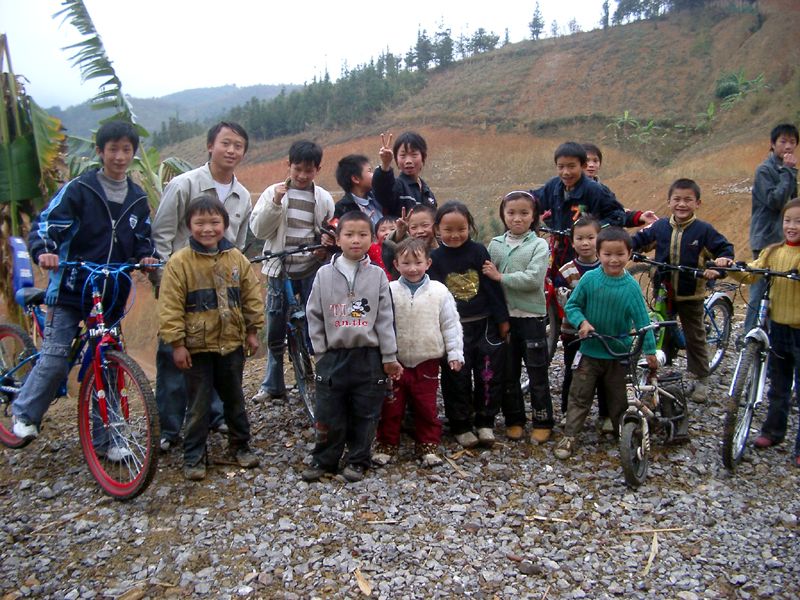Photos in the Book
Page 19: Every kind of housing imaginable can be seen in China, from Tibetan tents to the beautiful Miao house above, located in an isolated mountain spot in south-western Hunan.
Page 19: Increasingly common today, in cities and towns, are new housing estates, such as the above picture, in Huhhot, Inner Mongolia. Suburbs are growing quickly around cities, even small ones. New streets are built and the buildings go up. Tower cranes dominate the skyline.
Page 36: Fellow passengers on a bus in Hunan.
Page 41: A motuo (motorcycle) taxi equipped for rain.
Page 53: Lunch with a nurse and teacher. This and the next two pictures are on a train in hard sleeper.
Page 54: College students on their way home.
Page 54: A retired engineer tells a story about building a hospital in a remote part of Qinghai Province.
Page 58: These small passenger boats are at Jiangkou, a market town on the Xunjiang River in Guangxi.
Page 65: Bicycle disassembled for packing.
Page 65: Packed and ready to go. My latest bag is better, with sewn-on handles, instead of rubber hose over rope.
Page 66: My lucky day: I had a blowout on a small highway, almost directly in front of this repairman. The next day, I had several flats on a rough road and had to fix them myself.
Page 73: Zhaodaisuo (hostel) in Nei Menggu (Inner Mongolia).
Page 73: Small fuwutai (receptionist) in the zhaodaisuo telling me I can't go to my room.
Page 77: Lunch at a dapaidang (small street restaurant).
Page 77: Kids at the dapaidang watching me eat. The boy in front took the upper picture for me. His mother ran the place.
Pages 83-84 (above photo and five following): Typical signs outside wangba (Internet cafes). The traveler needs to train the eye to see and recognize the character wang ('net') repeated in all these signs. The wangba above is in Nei Menggu (Inner Mongolia), so features Mongolian script.
Pages 83-84: This wangba has the name, "Wang Chong", or Net Worm.
Pages 83-84: Wangba in Xining, Qinghai.
Pages 83-84: This wangba has a nice hand-painted sign.
Pages 83-84: Wangba
Pages 83-84: Wangba
Page 91: A billboard in the Zhongguancun area of Beijing, April 2003. Note the empty streets of a city under quarantine during the SARS (Severe Acute Respiratory Syndrome) scare.
Page 91: Dentist friends at a medical university. My teeth are in great shape now!
Page 166: An army actress with a dancing company en route to entertain soldiers at a remote base. This and the next three pictures are on a train in hard sleeper.
Page 166: A couple of young girls.
Page 167: A fellow traveler from Japan carried only a small duffle sack with a shoulder strap. He had no camera and no computer. He said his traveling cost more, because he had to buy clothes if it got cold, and abandon them when the weather got warmer.
Page 167: The aisle in a nearly empty train.
Page 189: Southern Guangxi -- Farmers wanting to know all about me stopped me on the road.
Page 189: North-west Guangxi, in the mountains. Like the Pied Piper, I quickly attracted an entourage of curious and friendly kids.
The frowning girl in the light blue sweater, center-right, was the organizer of this group for an outing to the home of a man they called a "witch doctor". The little kids were very afraid. The older kids said he had big dogs and many snakes. Later, we visited the schools and other special places.
